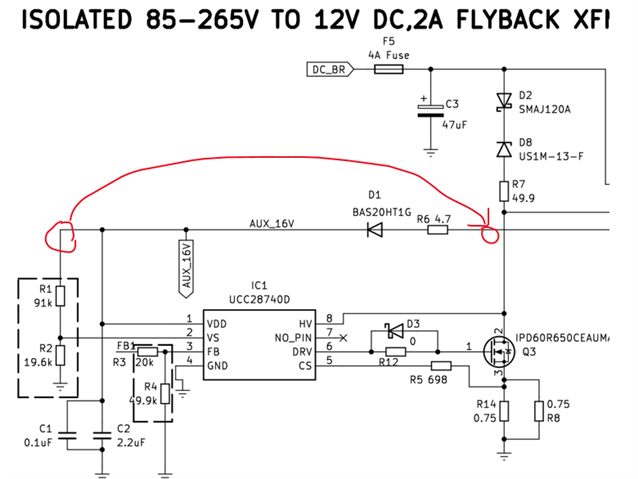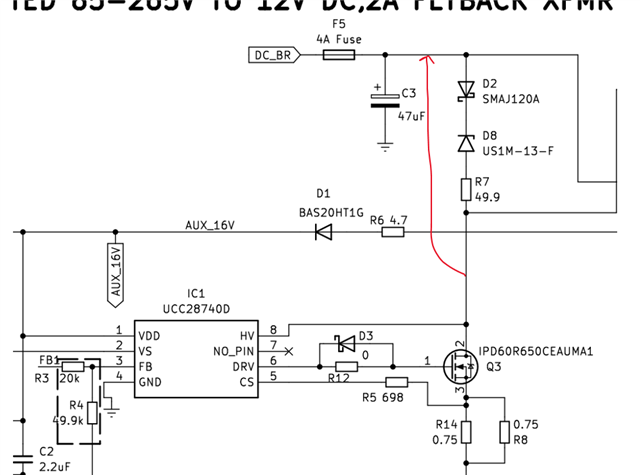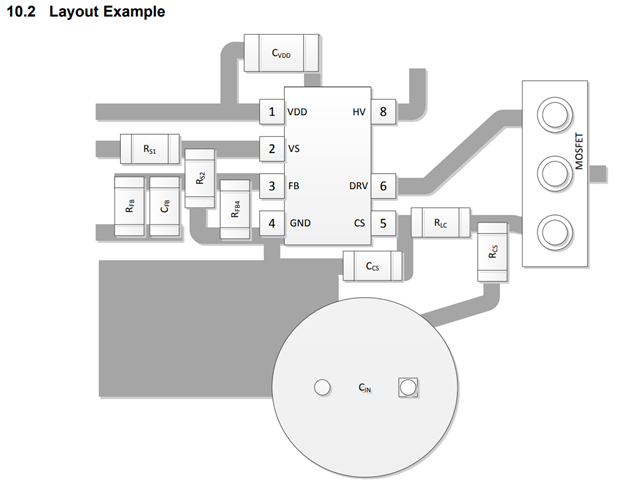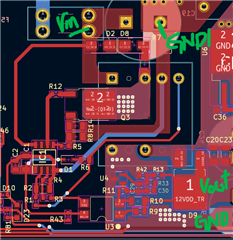Other Parts Discussed in Thread: PMP9638, LM341, TL431
Tool/software:
Hi,
I need help with the UCC28740 design based on the PMP9638 reference design.
1) Why is it not switching? The schematic is attached. My Auxiliary winding is intended for 20V but its reading 15V.
VS pin = 2.45V
VDD pin =14.20V
HV pin = 332V
CS pin - no reading
DRV - No reading
What could be the problem? I have also attached the PCB layout.
I have test the MOSFET and Diode, they all work fine.
2) Is there a way of checking whether the IC is damaged? (I doubt so)
3) Based on the PMP9638 reference design, the FB pin is receiving more than 7V which is the absolute maximum rating (UCC28740 datasheet ) if 20K and 49.9K acts as a voltage divider. How does it work?
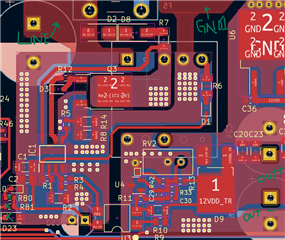 Schematic_PMP9638.pdfPMP9638.pdf
Schematic_PMP9638.pdfPMP9638.pdf
Kind regards,
Bright


